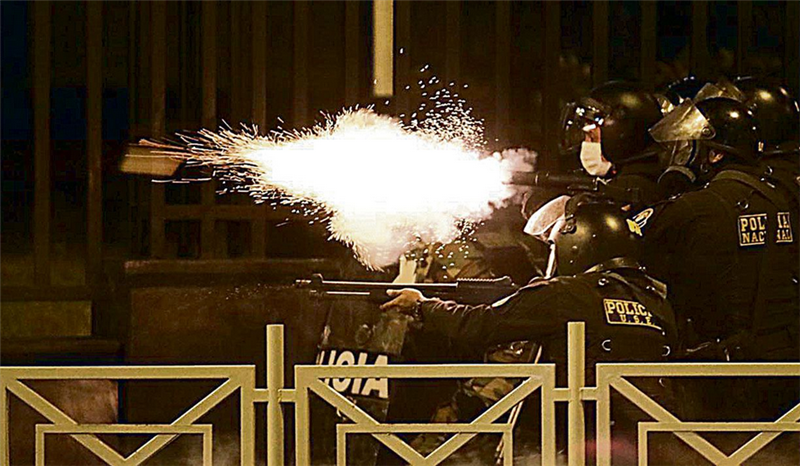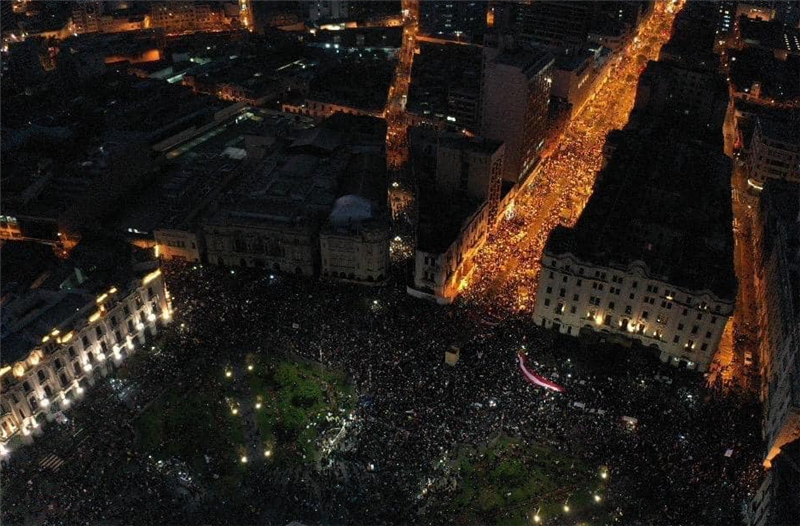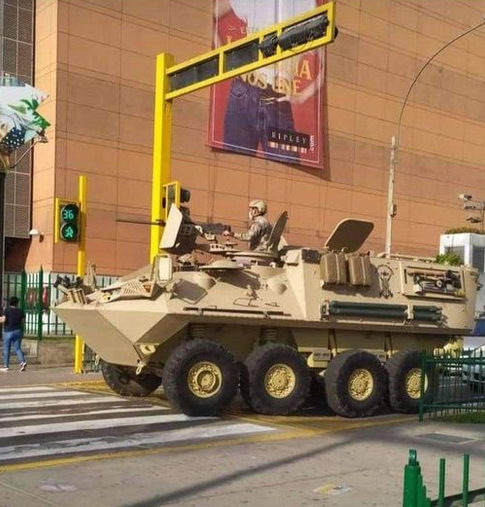
Two young men dead, over 100 people injured and 41 people reported missing was the toll of yesterday’s protest march in Lima, when police used excessive force against generally peaceful protesters downtown.
Within hours, three cabinet members handed in their resignations. By midnight, another 10 had resigned, barely two days after they had been sworn in at the steps of the Government Palace’s front courtyard.
Meanwhile, the board of spokespersons in Congress called for an emergency meeting for 8am this morning, Sunday, to demand the resignation of Manuel Merino and to find their way out of a situation they caused by voting to impeach and oust President Martin Vizcarra just six days ago.
During the first protest march on Thursday, 11 people were injured in Lima, some of them seriously — one is in intensive care with a rubber bullet lodged in his lung.
Both marches in Lima were huge, even larger than several in 2018 and 2019 which, like those this week, demanded an end to political and judicial corruption.

But unlike those marches, and unlike the marches this week across the rest of the country, the riot police in Lima used excessive force, firing tear gas, pellets and rubber bullets at close range into crowds of mostly peaceful protesters. Undercover police, dressed as university students, were not only observing the protesters but inciting violence and painting graffiti. In the middle income district of San Miguel, a military armored vehicle patrolled the main shopping mall. In Los Olivos in north Lima on Saturday evening, a police helicopter flew low over groups of protesters. In some areas earlier in the day, police blocked access to roads that lead to downtown.

“I hadn’t seen a military vehicle like these on the streets since Fujimori’s self-coup in 1992,” commended journalist Luis Jaime Cisneros, a director of the Press and Society Institute, IPYS . The Navy quickly stated the armored vehicles had been patrolling the area because of the Covid-19 emergency and were recalled to their station.
“Let’s hope this government doesn’t begin to acquire Fujimorista habits,” said politician Susel Paredes, referring to the police and military tactics during Alberto Fujimori’s regime, in an interview on RPP radio.
According to Cesar Gentille, Interior minister under Vizcarra, Merino was concerned earlier in the week that the police were not being harsh enough in suppressing the protests.
Merino’s conservative cabinet doubted the protest marches were freely organized via social media and were quick to blame critics, center-left politicians and even Movadef, the Shining Path’s beleaguered “legal” arm. Premier Antero Flores-Araoz said he could not understand what the protests were about and suggested people were tired of being in lockdown and just wanted to get out.
The new Interior minister, retired police chief Gastón Rodriguez, has denied the use of any undercover police during the protests. A video showing a person firing a pistol into the air was identified as a policeman on his day off, Rodriguez said, according to Peru.21 daily.
The United Nations, Amnesty International, Human Rights Watch, the Inter-American Court of Human Rights, the Organization of American States and a long list of local organizations have condemned the excessive force used in quelling the protests.
In sharp contrast to his predecessor, the Archbishop of Lima, Monsignor Carlos Castillo, also condemned the police violence. “We have to be aware that we face a deep problem that has been building up because of the continuing issue of corruption,” he said during his Saturday morning radio program on RPP. “We are in a situation that is too difficult to minimize, the demonstrations are the largest we have seen in our history…. we cannot minimize it or say that people are ignorant, that is not ethical.”
In March this year, Congress amended a police protection law, eliminating the criteria of proportionality in the use of force.
This article was updated Nov. 15 at 11:21 am.





